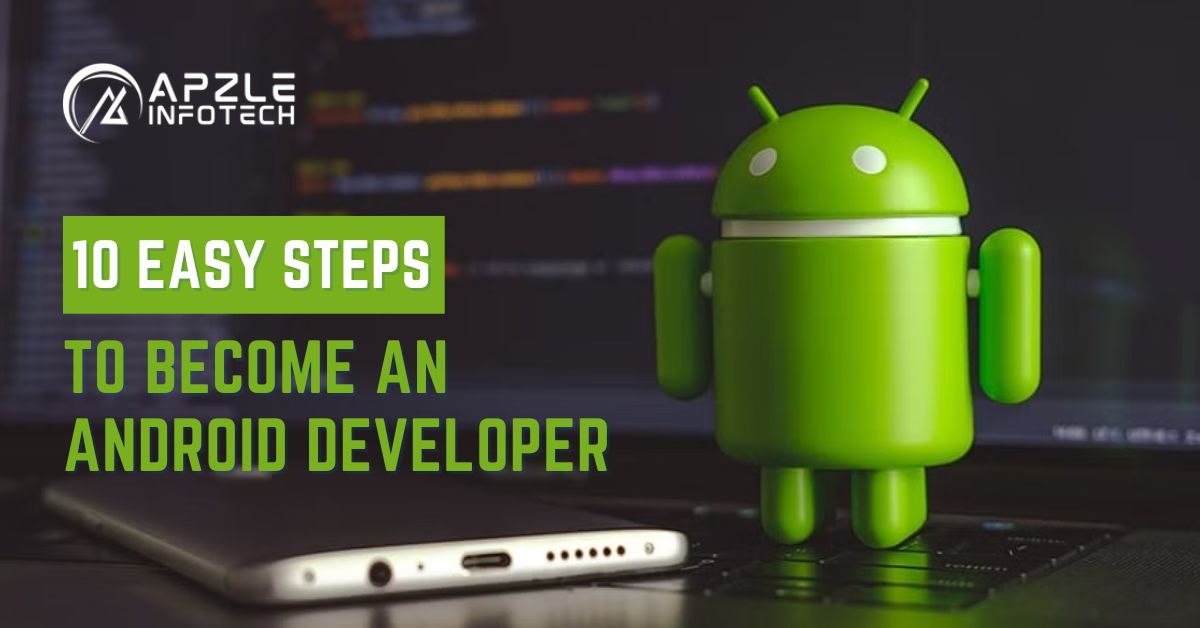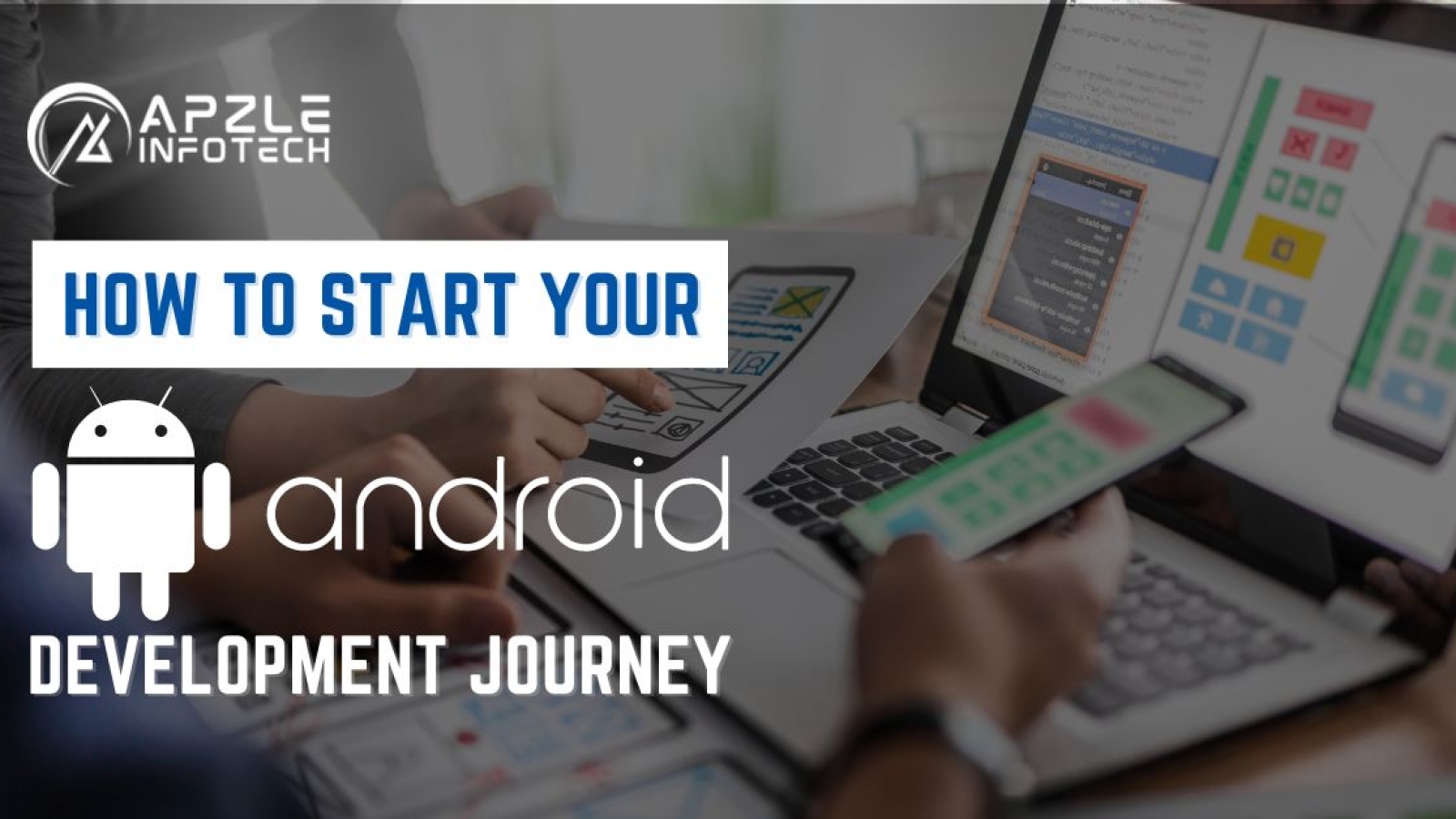Introduction
It can be a rewarding and exciting experience to embark on the Android development journey. The demand for app developers is increasing as the world becomes more digital. This comprehensive guide will walk you through all the steps, resources, and tools you need to start your Android Development journey successfully.
Table of Contents
How to Start Your Android Development Journey
It’s manageable to begin your Android development journey. You can build innovative applications with the right resources and approach. Here’s how you can get started:

1. Understanding the Basics of Android Development
It’s crucial to grasp the basics of Android app development before you begin coding. It would be best if you familiarized yourself with the Java or Kotlin languages, as these are the main languages used to develop Android apps. Learning the object-oriented principles of programming will provide a solid foundation.
2. Setting Up Your Development Environment
Install your development environment before you begin coding. Install Android Studio, the official Integrated Development Environment for Android app developers. Android Studio offers a user-friendly interface with debugging tools and an emulator for testing your apps.
3. Exploring the Android Architecture
Learn about the Android architecture and its components, such as fragments, views, and activities. Discover how these components work together to create responsive applications and a seamless experience for the user.
4. Creating Your First Android App
The exciting part is now upon us: creating your first Android application! Start small to learn the basics. Android Studio provides templates and wizards to help you set up your initial app structure.
5. Learning Layout Design
App design is crucial to user engagement. Designing user interfaces requires you to understand layout design principles, XML markup and XML markup. Android Studio has a visual editor that simplifies the process.
6. Mastering UI Components
Learn about Android’s different UI components, including buttons, text fields and image views. Learn how to manipulate their properties to create dynamic interfaces.
7. Navigating Between Screens
Use intents and Activities to navigate between screens in your app. It is essential to create apps that have multiple functions and user flows.
8. Understanding Data Storage
Learn how to store data in Android applications. Explore options such as SharedPreferences, which is suitable for managing small data and SQLite databases that are more complex.
9. Working with APIs
Integrate APIs for fetching data from external sources to enhance your app’s functionality. Learn how to make network requests asynchronously for a smoother user experience.
10. Testing and Debugging
The testing phase is crucial in the development of an app. Android Studio has debugging tools that can be used to find and fix errors. To ensure the reliability of your app, learn about automated and unit testing.
FAQs On How to Start Your Android Development Journey
Here are some most common asked questions and their answers
Q: What programming languages are commonly used for Android development?
Ans: Java and Kotlin are the primary programming languages used for Android app development. Kotlin has gained popularity for its concise syntax and enhanced features.
Q: Do I need prior programming experience to start Android development?
Ans: While prior programming experience can be beneficial, beginners can also start learning Android development. Patience, practice, and dedication are essential.
Q: How do I test my Android apps during development?
Ans: Android Studio provides an emulator that allows you to test your apps on virtual devices. You can also test on physical Android devices.
Q: What is the role of XML in Android app development?
Ans: XML is used for defining the layout and design of user interfaces in Android apps. It provides a structured format to create visually appealing UIs.
Q: Can I publish my Android apps on the Google Play Store?
Ans: Yes, you can publish your apps on the Google Play Store after meeting certain guidelines and requirements. This allows users to download and use your apps.
Q: How can I stay updated with the latest trends in Android development?
Ans: Follow reputable Android development blogs, forums, and communities. Attend conferences and webinars to stay informed about the latest advancements.
Conclusion
Embarking on your Android development journey opens doors to creating innovative apps that can impact millions of users. By following this comprehensive guide, you have learned the foundational steps, tools, and concepts necessary to kickstart your coding adventure. Remember that practice and continuous learning are key to mastering Android development. So, seize the opportunity, dive into coding, and build the next big thing in the app world!
If you’re interested in pursuing a career in Android development, it’s important to get the right training. Our institute in Dwarka Mor, Delhi offers a comprehensive Android development course training that will prepare you for a career in this exciting field. Our course covers all the essential skills and tools you need to become a successful Android developer. You’ll learn how to design and develop Android apps, how to use various development frameworks and tools, and how to publish your apps to the Google Play Store. In addition to the training, we also offer career support services to help you find job opportunities after completing the course. Our career support services include resume building, interview preparation, and job placement assistance. Our course is the perfect place to start. Contact us today to learn more and enroll in our Android development course training in dwarka mor, delhi.


Add a Comment